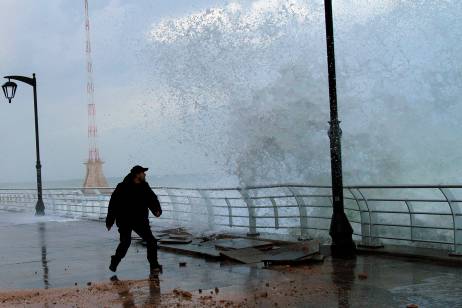This post is a clarification for a friend from the state of New Jersey and everyone else in the USA who have been embedded with the idea that since Lebanon is in the Middle East, the topography consists of a dry, arid desert with sand dunes and camels grazing all over the place and old Bedouins dressed in white robes trailed by their four wives all dressed in black. Belly dancers and genies in a bottle. Something magical and mysterious straight out of Disney’s Aladdin. A popular misconception among Americans. I apologize, but as exciting as that sounds, it’s not. Now don’t everyone jump down Brian’s my friend’s throat. He’s a totally awesome guy and a great snowboarder who’ll be dying to snowboard down the slopes of Faraya after this post.
Let’s begin with geography. Here below, you see Lebanon and it’s neighboring countries. Two things should pop out at you when you first lay eyes on this map. First, how teeny tiny Lebanon is compared to all it’s neighbors… not a lot of space to allow for a barren desert. On the other hand, if you put a population of 4 million in a land area of that of Syria, or Saudi Arabia, well sure, now you have plenty of room to play in your magical desert. The second thing that should pop out at you is…
Lebanon’s entire western border is completely surrounded by water.
This is important in not classifying Lebanon’s climate as a desert for two reasons. The first one being the obvious: there is no water in the desert. And the second being that where there is water, there is rain. While the definition of a desert is a region that receives an extremely low amount of precipitation, Lebanon does not. Summers are long, hot and humid but storms coming in from the Mediterranean Sea make our winters cold, wet, flooded, and hell for anyone trying to get around.
The general topography of Lebanon is mountainous. In other words, there are mountains. Lots of them, all with their own names, with the highest point being 10,131 feet above the Mediterranean Sea.
Does anybody see sand in any of these pictures? The mountains are green pastures and, mixed with Lebanon’s desirable climate, are excellent for vegetation. Lebanon’s fertile land and climate is ideal for growing exotic fruits and vegetables that you only find in certain states in the US, like California and Florida. That should give you an idea of the similarities in terrain, climate, and weather. As you may know with mountains, as the altitude increases, the colder the winters are. And the colder the winters are, the more likely you’ll have… SNOW! It only makes sense that since our winters in Beirut, which is at sea level, is cold and rainy, when you go up to the mountains, the precipitation turns to snow. So, yes, Lebanon has snow! And on top of that, a popular ski resort where the Lebanese and foreigners go to hit the slopes…
…And drink to stay warm…Cheers!
In conclusion, no, Lebanon is not a desert like our neighboring Middle Eastern countries, but instead, it is the vacation spot where the desert people go when the desert gets too hot. You could be swimming in the sea at 11 a.m. (if you like to swim in 50 degrees Fahrenheit weather) and could be hitting the ski slopes at 3:00 p.m. if you wish. (real snow, by the way) The incredibly varying degrees of elevation in such a short distance makes this possible to do so. This should help differentiate Lebanon among the other desert countries of the Middle East. At least in terms of climate.










Good to find this post! Just to add to the 50F comment – one time I visited Lebanon toward the end of the ski season, it was still good snow skiing in the sunshine at 55F (13C). I went to the beach at 2pm and down there it was 79F (26C)!
Maybe I got lucky with a heatwave.